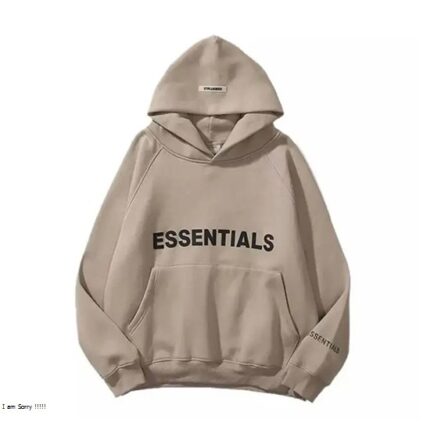The Problem with Fast Fashion
Fast fashion relies on cheap, mass production that leads to massive environmental damage. Visit now Eric Emanuel Shorts The industry is responsible for 10% of global carbon emissions and uses an extraordinary amount of water for dyeing and treating fabrics. Clothing production also contributes to water pollution, as textile dyeing is the second-largest polluter of clean water globally.
Labor Exploitation
Fast fashion is often associated with exploitative labor practices, particularly in developing countries where garment workers are paid low wages and work in unsafe conditions. These workers are expected to meet high production demands with little regard for their well-being.
Waste Generation
The fast fashion business model encourages a disposable mentality, where consumers buy clothes, wear them a few times, and then discard them. This has resulted in an overwhelming amount of textile waste, with 85% of all textiles ending up in landfills each year.
Sustainable Fashion Alternatives
The shift towards sustainability in fashion is not just a trend but a movement that addresses these pressing issues. Here are some viable alternatives to fast fashion that can help consumers make more conscious choices.
1. Secondhand and Vintage Shopping
One of the most popular alternatives to fast fashion is purchasing secondhand or vintage clothing. By buying pre-owned clothes, consumers can extend the lifecycle of garments and reduce demand for new products. This not only minimizes waste but also lessens the environmental impact associated with the production of new clothes.
2. Ethical and Sustainable Brands
Many ethical fashion brands are committed to creating high-quality, durable clothing while ensuring fair wages and safe working conditions for their workers. These brands often use sustainable materials, such as organic cotton, hemp, and recycled fabrics. Additionally, they implement eco-friendly production processes that minimize waste and energy consumption. Some notable brands include Patagonia, Everlane, and People Tree, all of which emphasize transparency in their supply chains.
3. Slow Fashion
Unlike fast fashion, slow fashion promotes the idea of creating fewer, high-quality pieces that are designed to last. Slow fashion advocates for a more thoughtful and intentional approach to clothing production, focusing on craftsmanship and sustainability. By choosing slow fashion, consumers can invest in timeless pieces that have a longer lifecycle, ultimately reducing their environmental footprint.
4. Renting and Leasing Clothes
Clothing rental services have emerged as a creative solution to the fast fashion problem. Companies like Rent the Runway and HURR Collective allow consumers to rent clothes for special occasions or everyday wear. This approach reduces the need for constant buying and discarding of clothing, leading to lower waste and environmental impact. Leasing clothes for specific events or seasons is another viable option for those looking to avoid the fast fashion cycle.
5. Upcycling and DIY Fashion
Upcycling involves transforming old or discarded clothes into new garments or accessories. This creative approach to fashion allows consumers to breathe new life into worn-out pieces, reducing textile waste. Similarly, DIY fashion empowers individuals to create or modify their own clothes, fostering a deeper connection to the items they wear and minimizing the desire for new purchases.
Sustainable Materials: The Key to Eco-Friendly Fashion
A major component of sustainable fashion is the use of eco-friendly materials. Check it now https://essentialsfogclothing.store/fear-of-god/ These materials are produced with less impact on the environment and are often biodegradable or recyclable. Here are some of the top sustainable materials used in fashion today:
1. Organic Cotton
Organic cotton is grown without the use of harmful chemicals or pesticides, making it a more environmentally friendly alternative to conventional cotton. It requires significantly less water and helps maintain soil health, which is crucial for sustainable agriculture.
2. Hemp
Hemp is another sustainable fabric that requires minimal water and pesticides to grow. It is a durable, biodegradable material that has been used for centuries in clothing production. Hemp is also highly versatile, and its fibers can be blended with other materials for a variety of textile applications.
3. Recycled Fabrics
Recycled materials, such as recycled polyester and recycled nylon, are made from post-consumer plastic waste, including discarded plastic bottles and old fishing nets. These materials help reduce the demand for virgin resources and keep plastic waste out of landfills and oceans.
4. Tencel (Lyocell)
Tencel is a type of fabric made from wood pulp, primarily from eucalyptus trees. It is produced through a closed-loop process that recycles water and solvents, making it an eco-friendly option. Tencel is also biodegradable, soft, and breathable, making it an ideal fabric for sustainable clothing.
Consumer Responsibility: How to Make Sustainable Choices
While there are many sustainable alternatives to fast fashion, consumers play a crucial role in driving change. Here are some tips for making more sustainable fashion choices:
1. Buy Less, Choose Wisely
One of the most effective ways to reduce your environmental impact is to buy fewer clothes and focus on high-quality, versatile pieces that you can wear repeatedly. Investing in durable items ensures that your wardrobe lasts longer, reducing the need for frequent replacements.
2. Support Ethical Brands
Choose to support ethical and sustainable brands that prioritize fair labor practices and eco-friendly production methods. Research the brands you buy from and look for certifications such as Fair Trade, Global Organic Textile Standard (GOTS), and Certified B Corporation to ensure that they meet high standards of sustainability and ethics.
3. Care for Your Clothes
Properly caring for your clothes can extend their lifespan, reducing the need to buy new items. Wash clothes in cold water, avoid over-drying, and mend any damages to prevent premature wear and tear. Simple actions like these can make a big difference in reducing your clothing’s environmental impact.
Conclusion: Moving Towards a More Sustainable Fashion Industry
The fashion industry is at a pivotal moment, with more and more consumers seeking sustainable alternatives to fast fashion. By embracing secondhand shopping, supporting ethical brands, and opting for eco-friendly materials, we can all contribute to a more responsible and environmentally friendly fashion ecosystem. The shift towards sustainability is not just about changing how we consume but also about reshaping the entire fashion industry to prioritize ethical practices and environmental stewardship.



